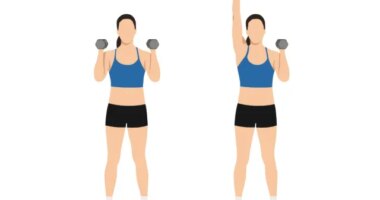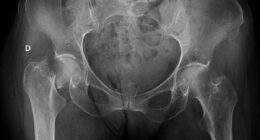
Doing Kegel exercises is a bit like flossing—it’s a tiny little thing that you know you should be doing regularly to keep a crucial part of your body healthy, but for some reason, it just completely slips your mind until the next time someone asks you about your track record. (Or, more likely, the next time you click an article like this one.)
And, hey, that’s not your fault. Unlike brushing your teeth, washing your face, and wiping front-to-back, doing Kegel exercises probably isn’t something that was drilled into you growing up…or even as an adult. Instead, most people don’t even hear about the importance of Kegels until after having a child or winding up in a pelvic floor physical therapist’s office with a health issue to solve. While these pelvic floor exercises (first introduced to the world by gynecologist Arthur Kegel in 1948) are often associated with postpartum recovery, they’re definitely not just for new parents. In fact, almost everyone can benefit from making them part of their daily fitness routine. Plus, you can do them pretty much anytime and anywhere (yes, even while on a boring Zoom call that could have been an email). Below, we asked an ob-gyn and a pelvic floor physical therapist to tell us all about Kegels, what they can do for you, and how to know if you’re even doing them the right way.
What are Kegel exercises?
So, what is a Kegel exercise, exactly? Quite simply, a Kegel is a contraction of the pelvic floor muscles. “We have approximately 24 pelvic floor muscles located in the pelvis, arranged in three layers,” says Amy Hill Fife, a pelvic health physical therapist with a private practice in Grand Junction, Colorado. All those muscles have pretty important jobs, which is why strengthening these muscles can benefit you in a variety of ways.
What do Kegel exercises do?
When done correctly and consistently, Kegel exercises can strengthen your pelvic floor muscles, which have four primary functions. The first role is to help support all of your abdominal organs, including the small and large intestine, the uterus, the liver, and the kidneys. The pelvic floor muscles also provide sphincteric control for your bladder and bowels, which basically means they keep you from leaking stool or urine, Fife explains.
There’s also a sexual function. “Some of the pelvic floor muscles go into a rhythmic contraction when you climax,” Fife explains. And the final function is core stability—the Kegels work together with abdominal muscles, hip muscles, and back muscles to help you maintain core balance and strength.
People may have a weak pelvic floor for various reasons, like pregnancy and childbirth. A weakening of these muscles is also a common part of aging.
READ RELATED: Holiday Season May Be A Burden To Heart Health
Weak pelvic floor muscles present just like any other muscle weakness in your body, explains Fife. Typically, the muscles will either lack strength, endurance, or both. “Common signs of a weak pelvic floor include leaking urine with cough, sneeze, or exercise, inability to control sudden bladder urges (so you rush to the bathroom), pelvic pressure, difficulty holding back gas, decreased ability to achieve an orgasm, and decreased sensation when having penetrative intercourse,” explains Fife.
“In serious cases, a weakening of the pelvic floor could eventually result in your pelvic organs dropping and creating a bulge into your vagina, rectum, or bladder—known as pelvic organ prolapse,” says Sherry Ross, M.D., ob-gyn and women’s health expert at Providence Saint John’s Health Center in Santa Monica, California.
Symptoms of a prolapse range from uncomfortable pressure in the pelvic area to leakage of urine. Fortunately, Kegels can help delay or even prevent pelvic organ prolapse and other symptoms related to a weak pelvic floor. According to Dr. Ross, doing Kegels consistently can lead to noticeable changes to your pelvic floor strength in about eight to 12 weeks.
Since pregnancy is one of the reasons the pelvic floor muscles can weaken, Dr. Ross recommends all pregnant people do Kegel exercises for pregnancy. By helping to strengthen these muscles, they can prevent symptoms such as urine leakage and pelvic organ prolapse caused by a vaginal delivery. A 2020 Cochrane Review1 of 46 trials involving 10,832 women concluded that starting a structured pelvic floor therapy practice early in pregnancy may help prevent urinary incontinence later in pregnancy and after delivery.
Experts also recommend a better knowledge of your pelvic floor to give you better control during the pushing phase of a vaginal delivery. (Also, you don’t have to actually give vaginal birth to affect pelvic floor muscles—simply being pregnant, especially multiple times, can affect your pelvic floor’s strength.)
Worth noting: While Kegels can help weak pelvic floor muscles, they can actually exacerbate pelvic floor muscles that are too tight. While consistently working out these muscles—just like any other muscle in the body—is beneficial for most people, stop and check in with a health care provider if you ever experience any pain with Kegels. “Some people’s pelvic muscles are too tight or they have pelvic pain due to muscle tightness, and if they do more Kegels they will likely make their problems worse,” warns Fife. In these cases, a pelvic floor physical therapy can actually help you learn how to “un-Kegel.”
How do you know if you are doing Kegels correctly?
If you’re new to this, it’s important to make sure you learn how to do Kegel exercises properly before you start pumping out a bunch of reps. It starts with figuring out where those pelvic floor muscles are—because they’re internal, you can’t actually see what happens when you tighten or relax them. The easiest way to identify them is to stop the flow of urine while you’re peeing, says Dr. Ross. “Hold the contraction for three seconds then relax, allowing the flow of urine to continue,” she says. “Repeat this a couple of times and you’ll have identified your Kegel muscles.” (That said, you don’t actually want to perform Kegels regularly while you’re peeing, so once you’ve identified these muscles, find another time to do them.)
Source: SELF









